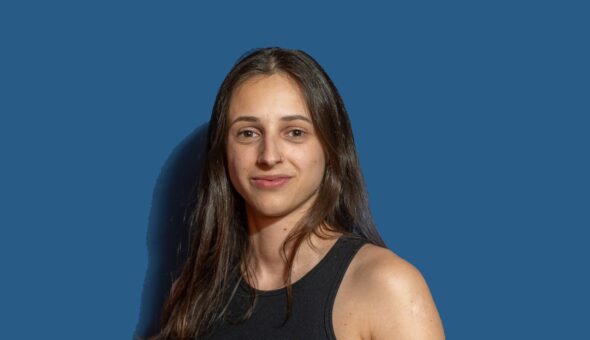Organisations are groups of individuals, all with their own identities and voices. But how good are we at recognising that, and enabling people to be part of an organisation whilst still being themselves? In this piece, Dr Krista Bondy of the Centre for Business, Organisations and Society, and Dr Aurelie Charles of the Department of Social & Policy Sciences, share reflections from a recently published paper on stakeholders and marginalised identities.
Earlier this month we celebrated International Women’s Day and it got me thinking about what it feels like to be a women in a professional setting. On the best of days, I am not aware of my ‘womanhood’, and just get on with the task at hand. On the worst, I am confronted with the fact that for some, my ideas, successes and challenges will never be valued in the same way as those coming from my male colleagues. On these days, I feel very isolated and disconnected from myself, and from my organisation. This sense of dislocation is common to many women I know, but also to many who belong to minority groups such as BAME, LGBTQ+and non-Christian religious communities, and all the intersections that result.
The universal self
This dislocation is in part due to a feeling of ‘otherness’, where the intersection of privileged categories such as male, white, educated and western, have come to form what feminist scholars call the ‘universal’ self. The rest of us are (often unconsciously) ‘othered’ and devalued as such, even by ourselves (devaluing people, ourselves included, can be understood through unconscious bias - see for instance Janet Crawford’s Ted Talk ). This is further exacerbated by the often felt need to play particular, very narrowly defined roles at work. As a Canadian working in the UK, one of my early experiences was of people ‘putting on their manager hat’. This, it seemed to me, was corporate speak for ‘now I am going to focus exclusively on narrow profit seeking motives and behaviour’. The manager hat therefore encouraged us to think according to a very narrow range of interests that seemingly excluded for example our gender, ethnicity, or our family situation. And with only the manager identity speaking, it was also the only one that was heard.
In a recent paper called Mitigating Stakeholder Marginalisation through the Relational Self, published in the Journal of Business Ethics, Aurelie Charles and I sought to understand this dislocation. In other words, why is it that stakeholders, who are often directly and importantly impacted by organisational activities, are not often heard by organisations? We argue that one part of the problem is based on the ‘manager hat’ way of viewing organisations. As Aurelie and I argue for the rest of this commentary, this is a mindset that closes the boundaries around who a stakeholder is and the interests that they have.
In theory, stakeholders are perceived as isolated islands (“essential selves”) without connection to others, or connection to the organisation outside and/or inside. However, in practice, every individual within an organisation relates in one way or another to other individuals inside and outside, through the different identities to which someone belongs – woman, entrepreneur, political activist. The intersection of these multiple identities provides a substantive range of knowledge and wisdom about what is happening in the world inside and outside the boundaries of the organisation. However, the problem is that these identities are very often marginalised relative to the universal self, and even if people representing these groups are capable of speaking out, the next substantive hurdle is whether they have been heard by those in a position to make positive changes. Remember that one key aspect of privilege is choosing not to listen.
Understanding stakeholders
So how do we shift away from a ‘hat’ based view of stakeholders, and thus come not only to be more of ourselves at work, but also to include those who are impacted, but not currently heard within organisations? One important change is in how we see ourselves and our relationships across organisational boundaries. We see this as having two key parts. First we need to think about who we are marginalising within ourselves. With what groups, identities or communities do we feel belonging? How and when do we silence these identities, despite them having something important to say? This is not to say that certain identities do not come to the fore in certain contexts, but it is about us questioning why, and in what conditions, we silence important parts of ourselves at work and beyond. Thus, as actors within organisations, we can let more of our identities speak. In early stages, this can happen through diversity programmes, backed by legislation in many countries, where employees voice issues, opportunities and insight through the mechanisms provided by diversity activities.
Better understanding our own marginalised identities also provides an opportunity for recognising these identities outside the walls of the organisation. Thus a second way we can become more of ourselves at work is to recognise those who (as a starting point) share an identity with us, and seek ways to enable them to provide their own voice into organisational decision-making. While in the paper we suggest a more passive role for organisations in stakeholder identification processes, and a stronger role for government in enabling groups to create their own voice, one important way those of us within organisations can also enable more marginalised groups is simply by providing information on process. Organisations (and other forms of institutions) can be very difficult, dense structures to navigate. Those of us on the inside can provide such details as how the organisation’s engagement processes work, who to contact, and language that is more likely be seen as relevant to decision-makers.
A heterogeneity of voices
In this way, the identities that we may marginalise in ourselves, and that exist outside the organisation in other people, can work together to create voice(s) that are more likely to be heard. Thus, we can use what privilege we have to better hear ourselves, and others with whom we may share experiences, so as to further incorporate them within organisational decision-making. As a starting point for inclusion, it is far from perfect, but it puts the onus on us, those who are at the intersection of many privileged identities, to take off our hats and hear the heterogeneity of voices with legitimate claims on the future of business.
Header image by Alex Blăjan on Unsplash
Respond



